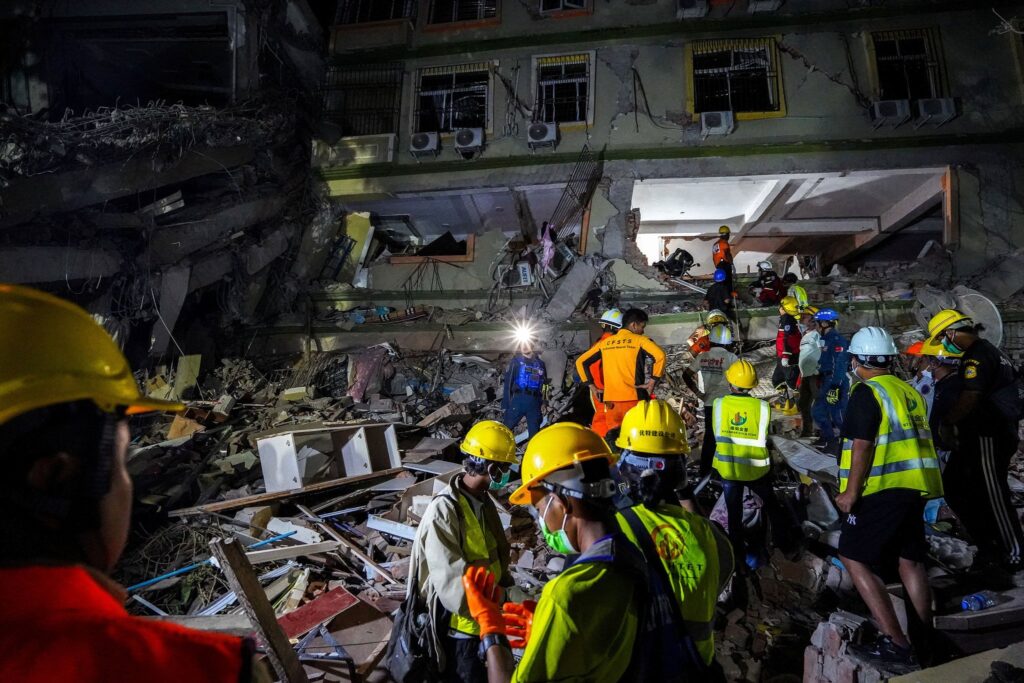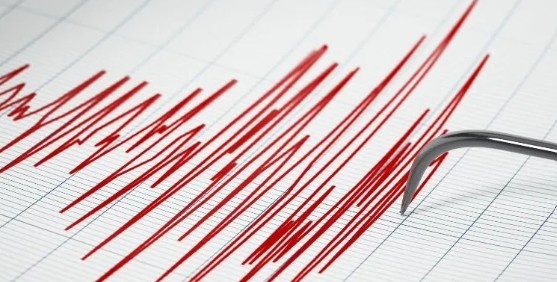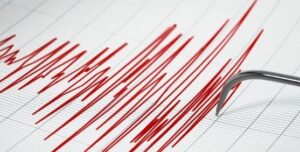Earthquakes are among the most powerful and unpredictable natural phenomena on Earth, capable of causing widespread destruction in a matter of seconds. These sudden movements of the Earth’s crust have shaped landscapes, altered human history, and continue to pose significant challenges to modern societies. This article explores the science behind earthquakes, their impacts, and the measures we can take to mitigate their devastating effects.
What is an Earthquake?
An earthquake is the shaking of the Earth’s surface caused by the sudden release of energy in the Earth’s crust. This energy is released when tectonic plates—massive slabs of rock that make up the Earth’s outer layer—shift, collide, or slide past one another. The point within the Earth where the earthquake originates is called the hypocenter, while the point directly above it on the surface is known as the epicenter.
Earthquakes vary in size and intensity, ranging from minor tremors that go unnoticed to catastrophic events that level cities. They are measured using the Richter scale or the more modern moment magnitude scale (Mw), which quantifies the energy released. For example, a magnitude 3.0 earthquake is barely perceptible, while a magnitude 7.0 or higher can cause widespread damage.
- Postal Index Number (PIN): A Cornerstone of India’s Postal System
- Raksha Bandhan: Celebrating the Bond of Love and Protection
- The Independence of India: Struggle, Sacrifice, and Triumph
- Earthquakes: Causes, Effects, and Preparedness
- OnePlus: Revolutionizing the Smartphone Industry with Innovation and Value

Causes of Earthquakes
The primary cause of earthquakes is the movement of tectonic plates, driven by the slow but constant motion of the Earth’s mantle. The Earth’s crust is divided into several large plates that float on the semi-fluid mantle beneath. These plates are in constant motion, interacting at their boundaries in three main ways:
- Divergent Boundaries: Plates move apart, creating new crust, often in oceanic regions. This can cause minor earthquakes, as seen along mid-ocean ridges.
- Convergent Boundaries: Plates collide, with one being forced beneath another in a process called subduction. This is common in areas like the Pacific Ring of Fire, where powerful earthquakes and volcanic activity occur.
- Transform Boundaries: Plates slide past each other horizontally, as seen along the San Andreas Fault in California. Friction between plates can build up stress, leading to sudden slips and earthquakes.
While tectonic activity is the primary driver, earthquakes can also be triggered by human activities, such as mining, reservoir-induced seismicity (caused by large dams), or fracking. Volcanic activity can also cause earthquakes, as magma movement stresses the surrounding rock.
Measuring and Detecting Earthquakes
Seismologists use instruments called seismometers to detect and record ground motion. These devices produce seismograms, which help scientists analyze the magnitude, depth, and location of an earthquake. The moment magnitude scale is widely used because it accurately measures the total energy released, especially for large earthquakes.
Earthquake early warning systems are increasingly being deployed in high-risk areas. These systems detect the initial, less damaging seismic waves (P-waves) and issue alerts before the more destructive waves (S-waves) arrive, providing seconds to minutes of warning. Countries like Japan, Mexico, and parts of the United States have implemented such systems to reduce casualties and damage.
Effects of Earthquakes
The impact of an earthquake depends on its magnitude, depth, location, and the region’s preparedness. The effects can be devastating, including:
- Ground Shaking: The primary cause of damage, shaking can collapse buildings, bridges, and infrastructure. Poorly constructed structures are particularly vulnerable.
- Surface Rupture: Fault movement can tear the ground apart, destroying roads, pipelines, and buildings.
- Tsunamis: Underwater earthquakes can displace large volumes of water, triggering tsunamis that inundate coastal areas. The 2004 Indian Ocean earthquake and tsunami killed over 230,000 people across 14 countries.
- Landslides and Avalanches: Shaking can destabilize slopes, causing landslides that bury communities or block critical infrastructure.
- Liquefaction: In water-saturated soils, intense shaking can cause the ground to behave like a liquid, leading to the sinking or tilting of buildings.
- Fires and Secondary Hazards: Ruptured gas lines or electrical faults can ignite fires, as seen in the 1906 San Francisco earthquake. Dam failures or chemical spills may also occur.
Beyond physical damage, earthquakes have profound social and economic impacts. They displace populations, disrupt economies, and strain emergency response systems. The psychological toll, including trauma and loss, can persist for years.
Notable Earthquakes in History
Some earthquakes have left an indelible mark on history due to their scale or consequences:
- 1906 San Francisco Earthquake (M7.9): This event destroyed much of the city, with fires causing additional devastation. It led to advancements in earthquake-resistant engineering.
- 1960 Valdivia Earthquake, Chile (M9.5): The most powerful earthquake ever recorded, it triggered a tsunami that affected coasts as far away as Japan.
- 2010 Haiti Earthquake (M7.0): Stri striking near the capital, Port-au-Prince, it killed over 200,000 people and highlighted the vulnerability of poorly constructed infrastructure.
- 2011 Tohoku Earthquake, Japan (M9.0): This earthquake caused a massive tsunami and the Fukushima nuclear disaster, underscoring the cascading effects of seismic events.
Earthquake Preparedness and Mitigation
While earthquakes cannot be prevented, their impacts can be reduced through preparedness and mitigation strategies:
- Building Codes and Retrofitting: Earthquake-prone regions like Japan and California enforce strict building codes to ensure structures can withstand shaking. Retrofitting older buildings strengthens their resilience.
- Emergency Planning: Governments, organizations, and individuals should develop emergency plans, including evacuation routes, communication strategies, and stockpiling supplies like food, water, and medical kits.
- Public Education: Teaching communities how to “Drop, Cover, and Hold On” during an earthquake can save lives. Awareness campaigns also emphasize securing heavy objects and preparing emergency kits.
- Early Warning Systems: As mentioned earlier, these systems provide critical seconds for people to take cover or for infrastructure like trains to stop.
- Land-Use Planning: Avoiding construction in high-risk areas, such as fault lines or liquefaction-prone zones, reduces vulnerability.
- Insurance: Earthquake insurance can help individuals and businesses recover financially after a disaster.
The Role of Science and Technology
Advancements in science and technology continue to improve our understanding and management of earthquakes. Supercomputer simulations model fault behavior, helping predict potential earthquake zones. Satellite-based technologies, such as GPS and InSAR, monitor ground deformation to identify stress buildup. Artificial intelligence is also being used to analyze seismic data and improve early warning systems.
Despite these advancements, predicting the exact time and location of an earthquake remains elusive. While scientists can identify high-risk areas and estimate probabilities, the complex nature of Earth’s crust makes precise predictions challenging.
Living with Earthquakes
For billions of people living in seismically active regions, earthquakes are a fact of life. From the Pacific Ring of Fire to the Himalayan belt, communities have adapted to this reality through engineering, planning, and resilience. Education and preparedness are key to minimizing loss of life and property.
Individuals can take simple steps to stay safe:
- Secure heavy furniture and appliances to prevent them from falling.
- Keep a flashlight, sturdy shoes, and a first-aid kit near your bed.
- Practice earthquake drills with family or coworkers.
- Know the safe spots in your home, such as under sturdy furniture or against an interior wall.
Conclusion
Earthquakes are a reminder of the dynamic and ever-changing nature of our planet. While they can be destructive, humanity has made significant strides in understanding and mitigating their impacts. By combining scientific research, technological innovation, and proactive preparedness, we can reduce the risks and build safer, more resilient communities. As we continue to live on a restless Earth, embracing these strategies ensures that we are better equipped to face the tremors of tomorrow.
If you’d like more specific information about earthquakes in a particular region or want to explore mitigation techniques in greater detail, let me know!















Leave a Reply